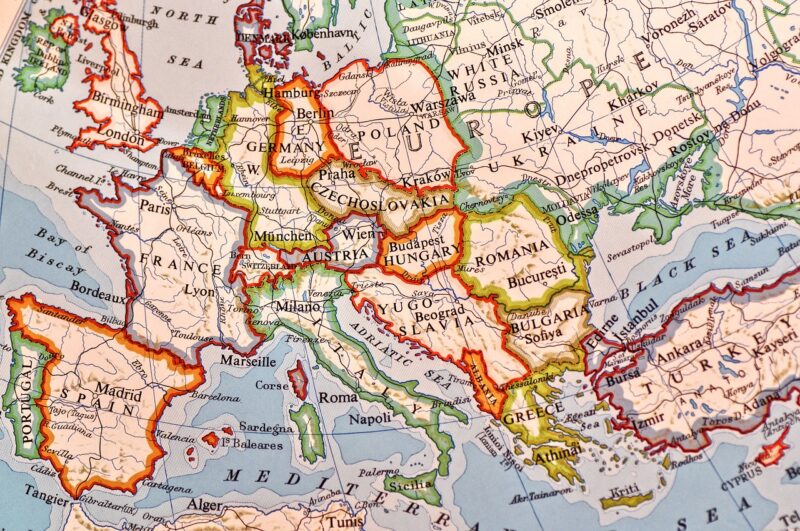How the Concept of Time Zones Was Created and Changed the World
November 17, 2024

The concept of time zones is something we often take for granted in today’s interconnected world. Yet, this ingenious system was not always in place. In fact, the establishment of time zones revolutionized not only the way we keep track of time but also shaped the modern world, including transportation, communication, and commerce.
1. The Need for Standardized Time
Before the invention of time zones, timekeeping was a local affair, with cities and towns setting their clocks based on the position of the sun. Each community had its own time, leading to significant inconsistencies, particularly when scheduling travel or communication. As railways began to proliferate in the 19th century, the need for a standardized method of timekeeping became glaringly apparent. Trains often ran on local time, creating chaos in scheduling and safety.
Imagine a traveler trying to board a train that’s scheduled according to a different local time, only to find it has already left. Such disruptions urged leaders in transportation to consider a standardized approach, culminating in the adoption of time zones.
2. The Birth of Time Zones: Sir Sandford Fleming’s Vision
Enter Sir Sandford Fleming, a Canadian engineer and inventor whose frustrations with calculating railway schedules sparked a revolutionary idea. In the 1870s, he proposed dividing the world into twenty-four time zones, each one covering 15 degrees of longitude. The rationale behind this division was simple: as the Earth rotates, each degree of longitude corresponds to a 4-minute difference in solar time.
Fleming presented his concept at the International Meridian Conference, held in Washington, D.C., in 1884. After much debate, the conference agreed to the idea, establishing the Greenwich Meridian (located in Greenwich, England) as the prime meridian (0 degrees longitude) from which all other time zones would be calculated. The implementation of time zones began, and the first global standard of time was born.
3. The Structure of Time Zones
Today, the world is divided into time zones that roughly correspond to the 15-degree longitudinal divisions proposed by Fleming. However, the reality is more complex. The Earth’s rotation isn’t perfectly uniform, and political boundaries often dictate the boundaries of time zones.
Most time zones differ by one hour, but some deviate by 30 or 45 minutes, such as India, which is at UTC+5:30. Additionally, many regions observe Daylight Saving Time (DST), further complicating the scheduling of events around the globe.
Notably, some countries, such as China, have chosen to adopt a single time zone despite their vast land area, illustrating how political decisions can influence the timekeeping system.
4. Impact of Time Zones on Modern Life
The establishment of time zones has profoundly changed how we live and work. Here’s a breakdown of some key areas that have been influenced by this division:
- Transportation: Airlines, railways, and shipping companies rely on standardized time zones for schedules. Coordinating different regions’ times ensures that people arrive at their destinations punctually and safely.
- Communication: In our globalized world, coordinating meetings across different time zones has become a common routine. Tools such as world clocks and digital calendars have made it easier to navigate these differences.
- Commerce: Businesses operating internationally must understand and plan for time zone differences when scheduling meetings or launching products, ensuring they effectively engage with global audiences.
- Cultural Exchange: Social media platforms and streaming services have further connected cultures, yet they also require careful navigation of time zones for live broadcasts and events such as online gaming tournaments or global video calls.
The ability to synchronize activities across the globe is a testament to the impact of time zones on our interconnected lives.
5. The Future of Time Zones: Challenges and Innovations
As society continues to evolve, so too does the concept of time zones. Challenges remain, particularly with the complexity of modern international interactions and advancements in technology.
Consider the rise of remote work: employees and employers now frequently operate in different countries and time zones, leading to potential scheduling challenges. Innovative technologies, like artificial intelligence, are being explored to facilitate seamless communication, regardless of time differences.
Furthermore, discussions regarding the abolition of Daylight Saving Time gain traction as more evidence surfaces regarding its impacts on health and productivity. Changing societal attitudes may prompt shifts in how we perceive and utilize time zones in the coming years.
Conclusion
The establishment of time zones not only improved the efficiency of transportation and communication but fundamentally shaped our modern world. Sir Sandford Fleming’s innovative idea laid the groundwork for a connected society, enabling us to traverse and collaborate across vast distances with ease. As we continue to navigate the challenges of the digital age, time zones will likely evolve further, accommodating our increasingly global lifestyle. Understanding their history and implications allows us to appreciate the significance of this essential concept and its impact on our daily lives.
Whether planning a trip, scheduling a call, or engaging in any of today’s global activities, the notion of time zones will continue to play a critical role in how we interact with one another.






